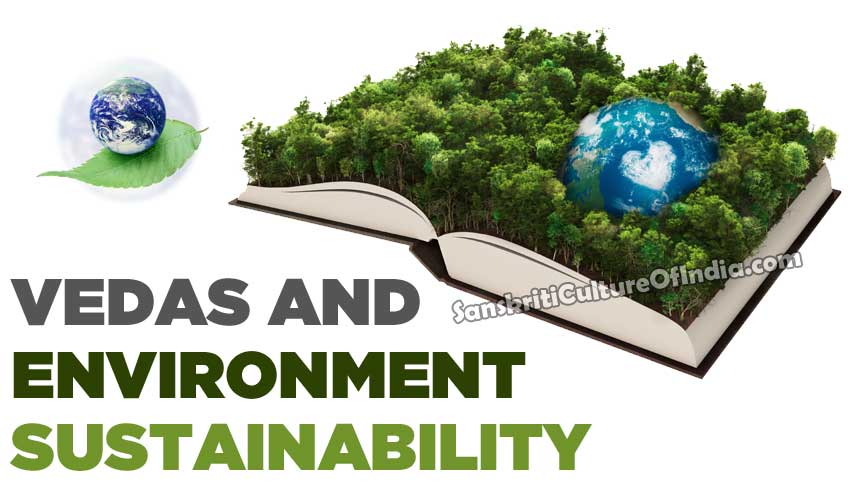Sustainability is a ‘buzz’ word in present scenario. In today’s global environment every country is focusing on sustainable development. Sustainable Development implies meeting the need of present without compromising the ability of future generations to meet their own needs. In other words, sustainability is the long-term maintenance of responsibility, which has environmental, economic and social dimensions.
It is interesting to know that the ancient Vedas have several references in them on environmental protection, ecological balance, weather cycles, rainfall phenomena, hydrologic cycle, and related subjects that directly indicate the high level of awareness of the seers and people of that time.
Ancient treasures of vast knowledge reveal a full cognizance of the undesirable effects of environmental degradation, whether caused by natural factors or human activities. The protection of the environment was understood to be closely related to the protection of the dyaus or heavens and prithvi or earth. Between these two lies the atmosphere and the environment that we refer to as the paryavaran . Many of the Rig Vedic hymns therefore vividly describe the Dyava Prithvi that is, they describe Heaven and Earth together.
The Rig Veda venerates deities like Mitra, Varuna, Indra, Maruts and Aditya , that are responsible for maintaining the requisite balance in the functioning of all entities of Nature whether the mountains, lakes, heaven and earth, the forests or the waters. Seers recognised that changes caused due to indiscreet human activities could result in imbalances in seasons, rainfall patterns, crops and atmosphere and degrade the quality of water, air, and earth resources.
There are many hymns seeking the blessings of the five basic gross elements or the pancha mahabhoota of Nature: akashor firmament, vayu or air, agni, tejas or fire, apah or water, and prithvi or earth. People were careful to refrain from activities that could cause harm to Nature’s bounties. It was understood that the well-being of Mother Earth depended on the preservation and sustenance of the environment.
For any inadvertent action leading to earth’s excessive exploitation the seers prayed for forgiveness, “Whatever I dig from thee, O Earth, may that have quick recovery again. O purifier, may we not injure thy vitals or thy heart”. The seers of Rig Veda speak on behalf of earth for its principle of replenishment “You give me and I give you”. They look at every entity of Nature with the eyes of a friend and sympathiser: “Mitrasyaaham chakshushaa sarvaani bhootaani sameekshe.”
The Rig Veda makes a clear reference to the presence of a protective layer ‘which we know now to be the ozone layer’ that filters the harmful rays of the sun and protects the earth and praises the radiation that enters the atmosphere that is responsible for the health of the environment. In a hymn of the Rig Veda the seer prays to the Ashvins for their indulgence for protection against any excessive solar flares that also affect earth’s temperature.
All four major Vedas ‘the Rig, Sama, Yajur and Atharva Vedas’ recognise the importance of maintenance of the seasons’ cycles that are likely to get altered due to the climate change owing to inappropriate human actions. It is remarkable that the people in Vedic times regarded Nature and the environment in a holistic manner and revered each of its constituents and entities by carefully preserving them. “Do not harm the environment; do not harm the water and the flora; earth is my mother, I am her son; may the waters remain fresh, do not harm the waters… Tranquillity be to the atmosphere, to the earth, to the waters, to the crops and vegetation.” This Vedic prayer invokes divine intervention to bless and protect the environment.
~ KN Sharma











